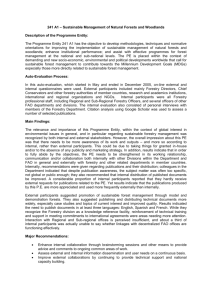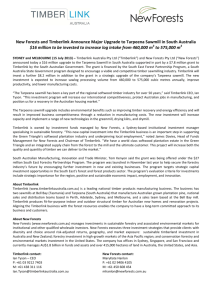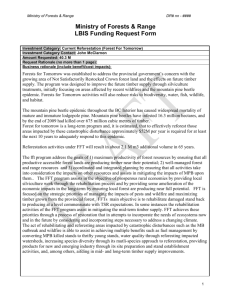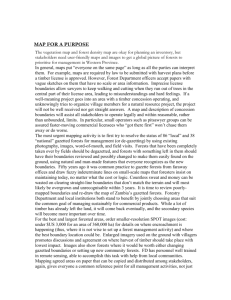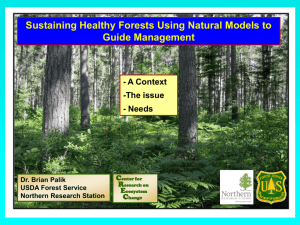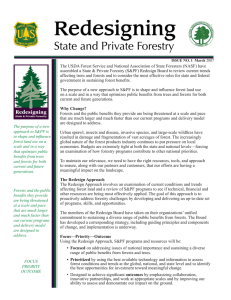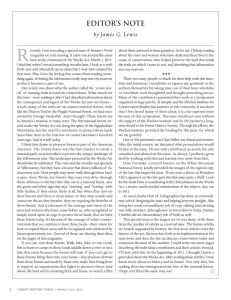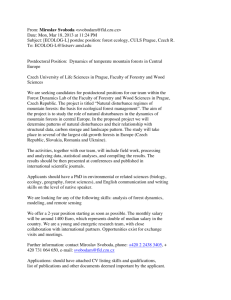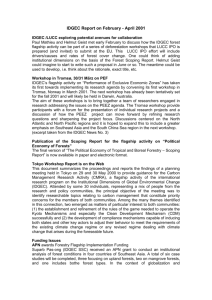Forestry is a major land use in the North East Region, covering
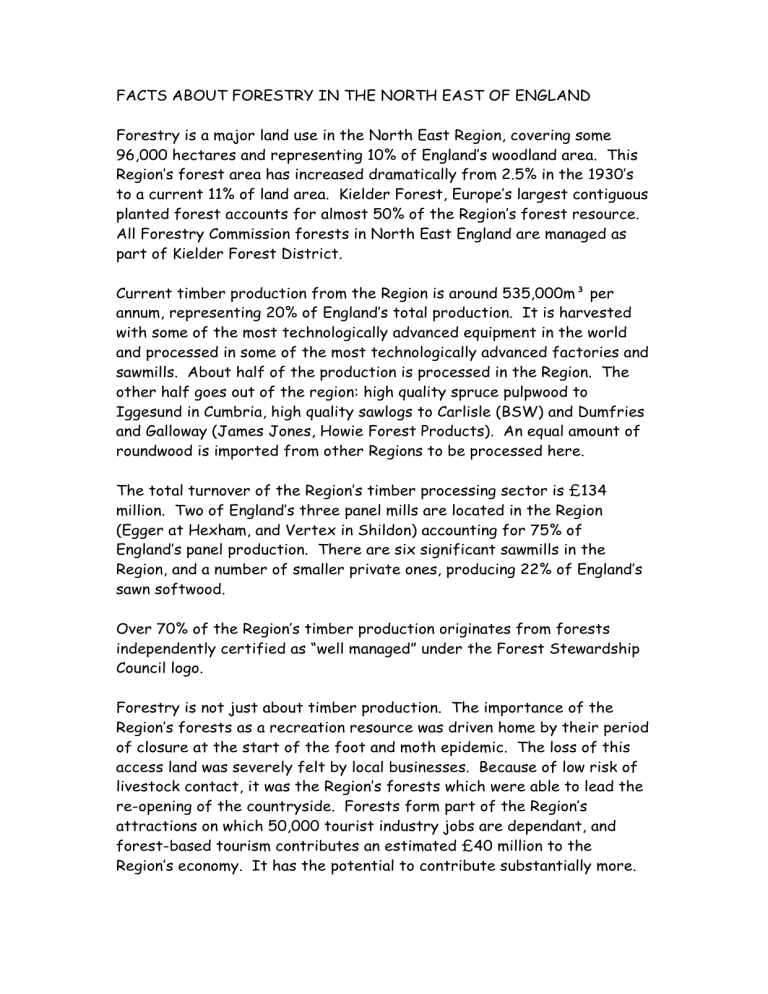
FACTS ABOUT FORESTRY IN THE NORTH EAST OF ENGLAND
Forestry is a major land use in the North East Region, covering some
96,000 hectares and representing 10% of England’s woodland area. This
Region’s forest area has increased dramatically from 2.5% in the 1930’s to a current 11% of land area. Kielder Forest, Europe’s largest contiguous planted forest accounts for almost 50% of the Region’s forest resource.
All Forestry Commission forests in North East England are managed as part of Kielder Forest District.
Current timber production from the Region is around 535,000m³ per annum, representing 20% of England’s total production. It is harvested with some of the most technologically advanced equipment in the world and processed in some of the most technologically advanced factories and sawmills. About half of the production is processed in the Region. The other half goes out of the region: high quality spruce pulpwood to
Iggesund in Cumbria, high quality sawlogs to Carlisle (BSW) and Dumfries and Galloway (James Jones, Howie Forest Products). An equal amount of roundwood is imported from other Regions to be processed here.
The total turnover of the Region’s timber processing sector is £134 million. Two of England’s three panel mills are located in the Region
(Egger at Hexham, and Vertex in Shildon) accounting for 75% of
England’s panel production. There are six significant sawmills in the
Region, and a number of smaller private ones, producing 22% of England’s sawn softwood.
Over 70% of the Region’s timber production originates from forests independently certified as “well managed” under the Forest Stewardship
Council logo.
Forestry is not just about timber production. The importance of the
Region’s forests as a recreation resource was driven home by their period of closure at the start of the foot and moth epidemic. The loss of this access land was severely felt by local businesses. Because of low risk of livestock contact, it was the Region’s forests which were able to lead the re-opening of the countryside. Forests form part of the Region’s attractions on which 50,000 tourist industry jobs are dependant, and forest-based tourism contributes an estimated £40 million to the
Region’s economy. It has the potential to contribute substantially more.
Forest-based recreation is important to North-East people as well as visitors, providing fresh air and exercise (the best form of preventative medicine) with an estimated 13 million visits to forests and woodlands in the Region each year. Again there is potential to do more. The two
Community Forests and the other urban fringe forests and woodlands have key roles to play.
Forests and woodlands make a substantial contribution to the achievement of the Region’s biodiversity targets. This is not just the native broadleaved woodlands which are important habitats in their own right, but also the conifer where, although the trees are introduced, the plants and animals they contain are mostly native. Modern management practices are making the conifer forests increasingly valuable as a habitat for species both common and rare.
Source: Graham Gill, Forest Enterprise. June 2002



